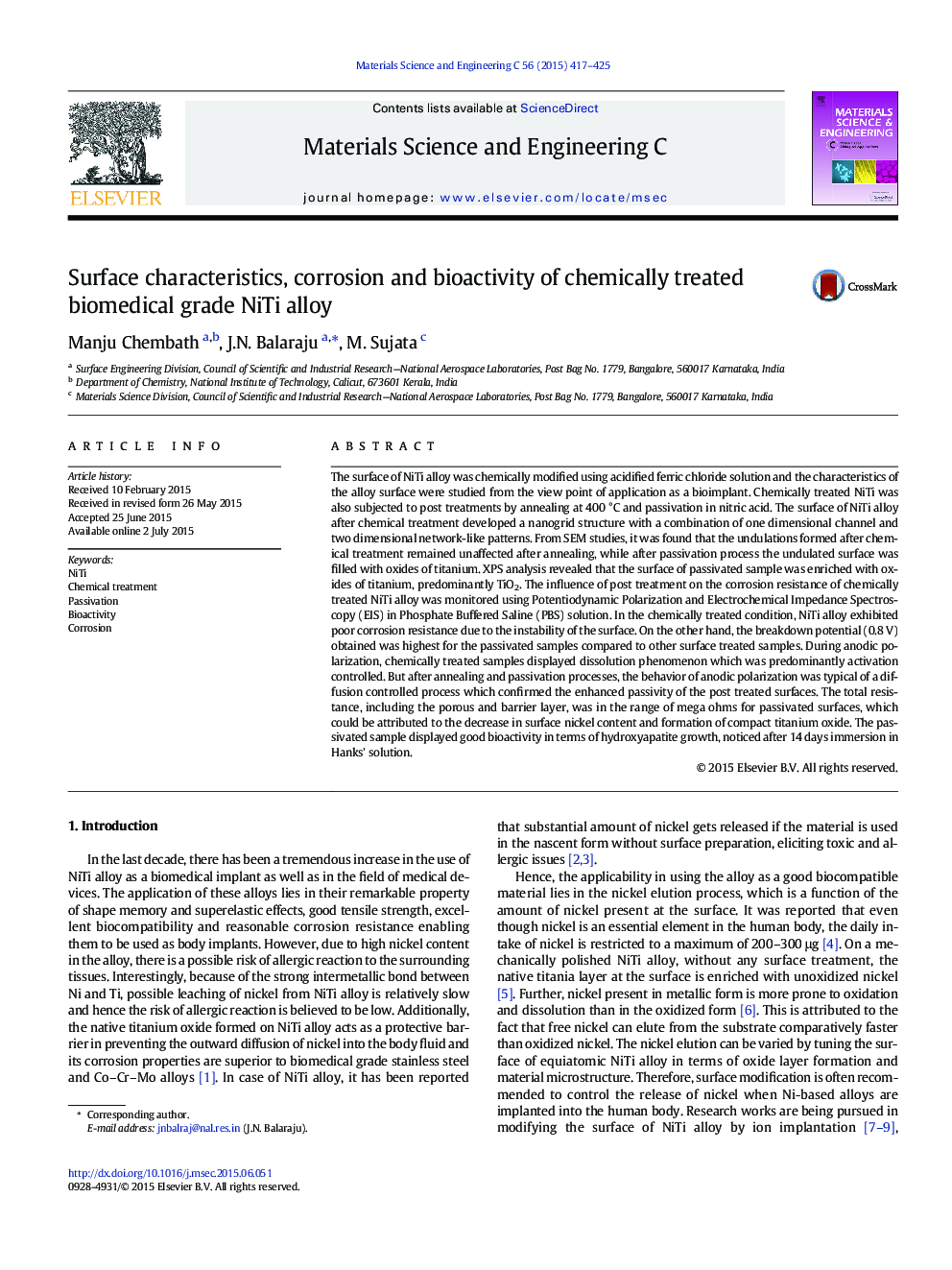| کد مقاله | کد نشریه | سال انتشار | مقاله انگلیسی | نسخه تمام متن |
|---|---|---|---|---|
| 7869210 | 1509165 | 2015 | 9 صفحه PDF | دانلود رایگان |
عنوان انگلیسی مقاله ISI
Surface characteristics, corrosion and bioactivity of chemically treated biomedical grade NiTi alloy
دانلود مقاله + سفارش ترجمه
دانلود مقاله ISI انگلیسی
رایگان برای ایرانیان
کلمات کلیدی
موضوعات مرتبط
مهندسی و علوم پایه
مهندسی مواد
بیومتریال
پیش نمایش صفحه اول مقاله

چکیده انگلیسی
The surface of NiTi alloy was chemically modified using acidified ferric chloride solution and the characteristics of the alloy surface were studied from the view point of application as a bioimplant. Chemically treated NiTi was also subjected to post treatments by annealing at 400 °C and passivation in nitric acid. The surface of NiTi alloy after chemical treatment developed a nanogrid structure with a combination of one dimensional channel and two dimensional network-like patterns. From SEM studies, it was found that the undulations formed after chemical treatment remained unaffected after annealing, while after passivation process the undulated surface was filled with oxides of titanium. XPS analysis revealed that the surface of passivated sample was enriched with oxides of titanium, predominantly TiO2. The influence of post treatment on the corrosion resistance of chemically treated NiTi alloy was monitored using Potentiodynamic Polarization and Electrochemical Impedance Spectroscopy (EIS) in Phosphate Buffered Saline (PBS) solution. In the chemically treated condition, NiTi alloy exhibited poor corrosion resistance due to the instability of the surface. On the other hand, the breakdown potential (0.8 V) obtained was highest for the passivated samples compared to other surface treated samples. During anodic polarization, chemically treated samples displayed dissolution phenomenon which was predominantly activation controlled. But after annealing and passivation processes, the behavior of anodic polarization was typical of a diffusion controlled process which confirmed the enhanced passivity of the post treated surfaces. The total resistance, including the porous and barrier layer, was in the range of mega ohms for passivated surfaces, which could be attributed to the decrease in surface nickel content and formation of compact titanium oxide. The passivated sample displayed good bioactivity in terms of hydroxyapatite growth, noticed after 14 days immersion in Hanks' solution.
ناشر
Database: Elsevier - ScienceDirect (ساینس دایرکت)
Journal: Materials Science and Engineering: C - Volume 56, 1 November 2015, Pages 417-425
Journal: Materials Science and Engineering: C - Volume 56, 1 November 2015, Pages 417-425
نویسندگان
Manju Chembath, J.N. Balaraju, M. Sujata,